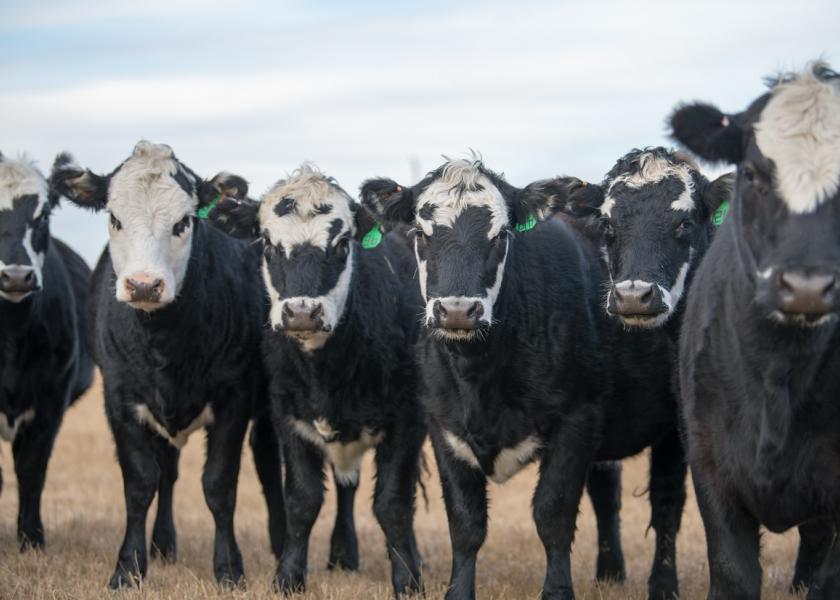Selection of Heifers Based on Cowherd Data Collected at Weaning

Over the past several weeks we have discussed how the data collected at weaning can help to cost effectively manage the cow herd. At a time of continued high grain prices, Oklahoma cattle producers also suffer from a lack of rainfall which is jeopardizing the potential of cool season grass pastures. This week we take a look at the selection and development of replacement heifers.
In order to maximize profit potential it is important to have heifers calving at two years of age. The time period required for replacement heifers to pay for their development and maintenance is referred to as the payback period. On average, six calves are necessary for the female to pay for her development and maintenance expenses. That is, a 7-year-old female weaning her sixth calf is at the breakeven point. If the female misses producing a calf one year. The payback period extends to 9 calves. Research shows heifers becoming pregnant early in their first breeding season, (specifically the first 21 days) remain in the herd longer and produce more total calf weaning weight over their lifetime in production.
How do we select and manage replacement heifers so that they are having fertile heats and ready to conceive by 14-15 months of age? Genetics, photoperiod, level of nutrition and growth rate all influence when beef heifers will reach puberty; that being said, heifers that have reached 65% of their mature weight by this age should have reached puberty and be ready to breed. Obviously age should be taken into account, (along with other selection criterion), when selecting replacements, with older heifers having an advantage. Heifers calves born earlier in the calving season, are produced by cows that conceived earlier in the breeding season.
After heifers are selected, how do we arrive at the target weight they need to gain from weaning until their first breeding season? First we need an accurate estimate of the average mature cow weight. By using the weights taken at weaning time on the 4 to 7-year old cows and adjusting to a Body Condition Score of 5 (Chapter 20 Beef Cattle Manual) we can calculate average mature weight of the cowherd. For example:
Average Weight of Mature Cowherd = 1300 lb.
Average Weaning Weight of Selected Heifer Calves = 527 (Weaning Weights taken on October 1st)
Beginning of breeding Season planned for May 1st, corresponding to a calving season starting approximately February 8th.
212 Days from October 1st to May 1st.
Target Weight = 1300 lb. Mature Weight x .65 = 845 lb. by May 1st.
Gain Needed = 845 – 527 = 318 lb.
Average Daily Gain Needed from Weaning to Breeding Season = 345/212 = 1.5 lb./day
What is the best way to feed to reach that Target Weight? In a normal Oklahoma year, spring born heifers weaned in October are old enough to make good use of wheat pasture available by late November and gain 1.5 lb. per day (or better) to reach targeted weight. This would typically be the most cost effective way to develop replacements. The way this year is shaping up, cool season grass pasture looks iffy.
The good news?, it is documented that heifers can rough it and be grown very slowly through the winter months and fed harder for the couple of months going into breeding season in order to reach target weight by breeding season. This is the development method referred to as SLOW-FAST in Chapter 29 of the newest edition of the OSU Beef Cattle Manual. The SLOW-FAST feeding method for replacement heifers can also be a more cost effective means of reaching the target weight than feeding for a consistent daily gain over the entire feeding period.
Additional Management Advice for Developing Replacement Heifers
- Don’t use growth implants. While it may be tempting to get the improved gain, replacement heifers should not be implanted at weaning (or later) as it will decrease fertility and pregnancy rates.
- Use ionophores (monensin or lasalocid) when possible, they are proven to cost effectively improve growth with no downside to fertility.
- Target a Body Condition Score of 6 by the beginning of breeding season. It’s not only important that heifers reach target weight but also important they don’t get overly fat as this can reduce fertility as well.
References
Beef Cattle Manual. Eight Edition. E-913. Oklahoma Cooperative Extension. Chapters 20 and 29.







